Perception of Reality Through Expression
An Exhibition in Camp Asthetic and the post-media
 By: Jordan Krystyniak
By: Jordan Krystyniak
ARC 242
Preface
First, there is an expression, a term that helps guide people on the path to discovering specific characteristics that will shape their worldview and their perspective of reality. Expression allows for the creation of an opinion that is meant to guide humans to their beliefs and to introduce them to their specific craft. Due to the post digital, this is now achievable. Allowing for the attitude to be shifted from the digital perspective to the human perspective. There is an idea that life is beyond the digital world because there are more personal and physical connections that a human can have with the world, where as the digital world stops when the mind of the human stops inventing. Since the human is able to create and create and the digital world is a product of that creation, we can see how the human brain goes beyond the brain of the digital. This will lead to one’s perception of reality to be altered because they are no longer trapped in the digital. Eventually, man’s perception of reality will be shaped by how they express themselves and what they believe the post digital is telling them. But what makes post-digital play such a powerful role in one’s life? Why is someone’s opinions and thoughts so important to how they perceive reality? It’s truly beautiful to see how vast
the diversity of the world is when it comes to ferent perceptions of reality. Even though there many different opinions, the post digital can a way of communication, connecting people their similar interests and beliefs. The post digital allows for the constant challenge of universal which are very prominent and noticeable in today. Similar to how the post digital challenges mon ideas, the term “camp” was created with purpose of challenging the norm and introducing abnormal, unnatural, and discomfort. When “camp”, expression, humor, and irony are heavily inent in this specific form of style. There is so potential in the effects “camp” can have on which can either shape it for the better or the Camp is classified as the love of the exaggerated, “Off”, the things-being-what-they-are-not (Susan 1964). Though it is thought of as unnatural, way of seeing the world as an aesthetic phenomenon (Susan Sontag, 1964). This raises the question people perceive reality when it comes to the and how a camp’s aesthetic could help persuade opinion even further. The task of this exhibition attempt to break down the different possibilities “camp’s” aesthetic is perceived in a post digital that can lead to a solidified representation of ception of reality.
to the difthere are so can serve as people through digital also universal ideals, our society challenges comwith the sole introducing the it comes to heavily promso much our society the worse. exaggerated, the (Susan Sontag, it is one phenomenon question of how the post digital persuade that exhibition is to possibilities of how digital aspect of one’s per-
Now “camp” is not solely about the perception of a moment or object, but how the object can speak and describe its craft and purpose to the person who is trying to read it. Anything that is presented in the art/ design world is a craft “unless all links with the idea of function [has] been severed, then it leaves the field of craft” (Risatti Howard and Kenneth R Trapp, 2007). Since “camp” is classified as an artistic expression, it brings craft into the equation. Craft’s significance is also able to transform conceptually which is also how “camp” is able to change the perspective of people and traditions conceptually. With “camps’” many definitions, most things can have the craft of camp if examined and analyzed in an abnormal and obscured way. Man must think outside of the box to fully understand how camp can change our society and the effect this form of expression has on the well-being and aesthetic of the people it surrounds. Due to there not being a set-in-stone definition for camp, it allows for interpretation. This term was invented by Susan Santog because “camp” was neither named nor had been described. She described it as the “sensibility unmistakably modern, a variant of sophistication but hardly identical with it that goes by the cult name of ‘Camp’”
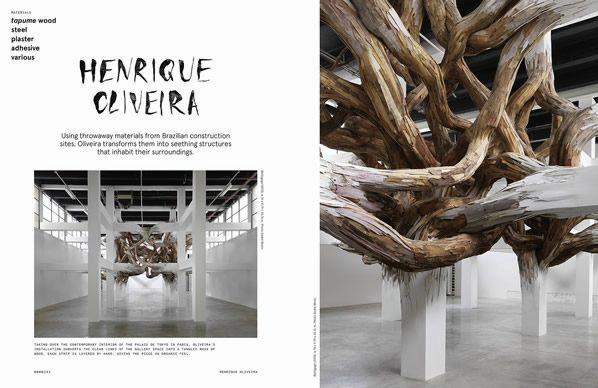
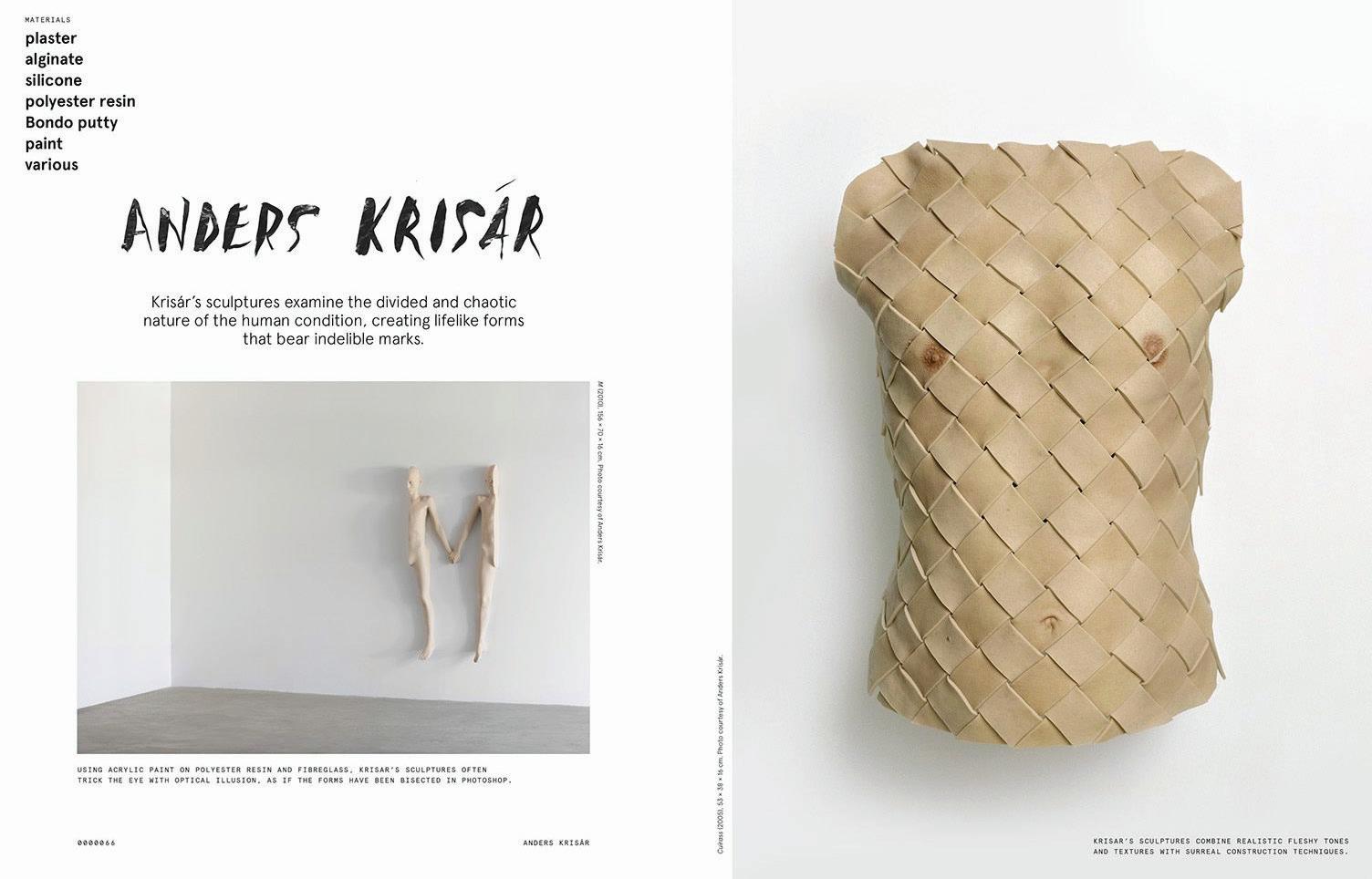
(Susan Sontag, 1964). Exaggeration is the
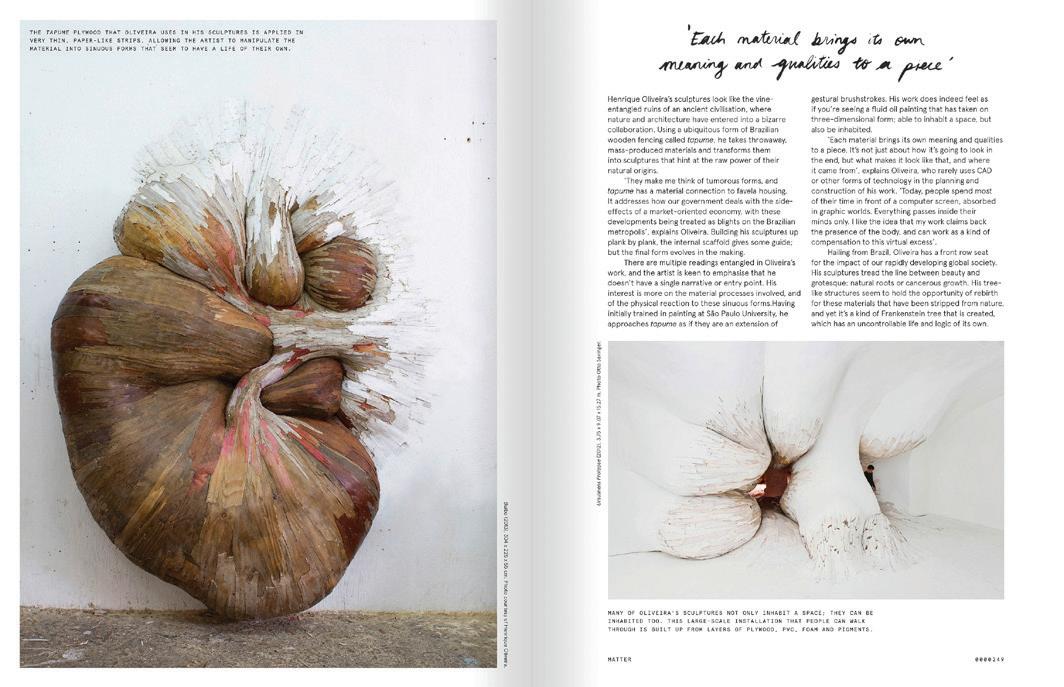 Figure 1: Openshaw, Jonathan. Postdigital Artisans: Craftsmanship With a New Aesthetic in Fashion, Art, Design and Architecture. 2015
Figure 2: Openshaw, Jonathan. Postdigital Artisans: Craftsmanship With a New Aesthetic in Fashion, Art, Design and Architecture. 2015
Figure 3: Openshaw, Jonathan. Postdigital Artisans: Craftsmanship With a New Aesthetic in Fashion, Art, Design and Architecture. 2015
Figure 1: Openshaw, Jonathan. Postdigital Artisans: Craftsmanship With a New Aesthetic in Fashion, Art, Design and Architecture. 2015
Figure 2: Openshaw, Jonathan. Postdigital Artisans: Craftsmanship With a New Aesthetic in Fashion, Art, Design and Architecture. 2015
Figure 3: Openshaw, Jonathan. Postdigital Artisans: Craftsmanship With a New Aesthetic in Fashion, Art, Design and Architecture. 2015
best way to describe this term. This style holds an interactive beauty with the industry and has made a huge impression in the trade. It could also be described as an excess amount of color or material which creates a theatrical characteristic. It started showing up when men’s makeup became encouraged and can still be expressed through drag. Camp truly is a beautiful way to express oneself in the most embellished, ostentatious way. Camp is also not only seen as just a form of fashion or design; it can be classified as many different pieces of art such as movies, songs, people, furniture, and buildings. The study of fashion has also been placed alongside the study of theater, journalism, advertising, and film, allowing for the recognition of its potential as a significant cultural force (Risatti Howard and Kenneth R Trapp, 2007). Not only is fashion so similar to these other forms of art, but camp is one of the ways that unites all of these forms of media together. Camp can explore and inspire every section of society, leading to the encouragement of adopting the camp aesthetic into any action or idea. Camp has found a way to connect the people to design and the design to the people. Many controversial
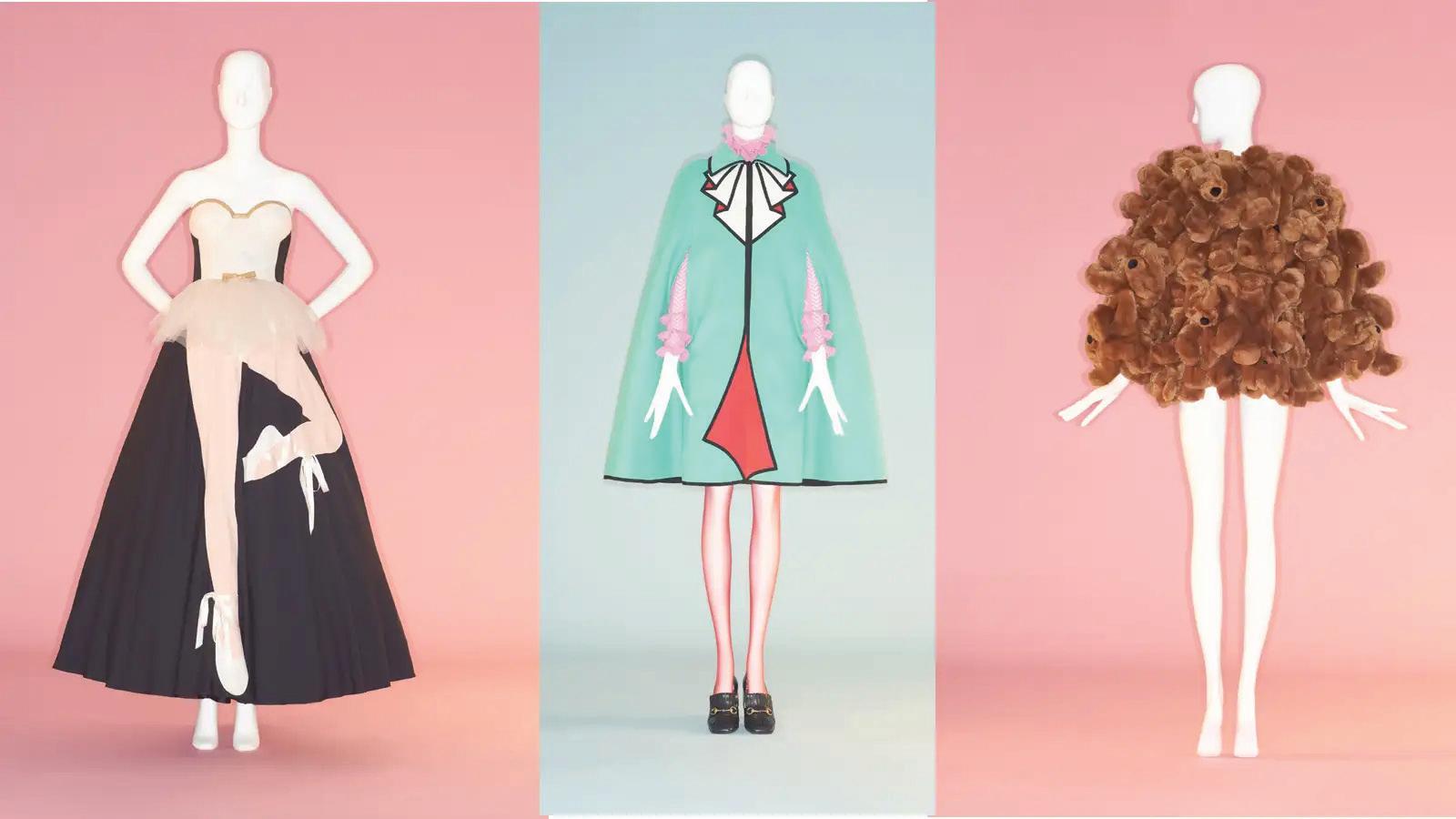
acts into ating to express would ativity are able have receive the introduction the ability on the that a person of reality beautiful creativity makes Camp But why their ple believe all about or the ficult the end, forming norms design,
 Figure 5: Courtesy of the Metropotan Museum of Art, Photo © Johnny Dufort, 2018
Figure 4: Courtesy of the Metropotan Museum of Art, Photo © Johnny Dufort, 2018
Figure 5: Courtesy of the Metropotan Museum of Art, Photo © Johnny Dufort, 2018
Figure 4: Courtesy of the Metropotan Museum of Art, Photo © Johnny Dufort, 2018
have occurred due to the introduction of camp specific topics or events, but it ended up creating a bond with the people. All humans are meant express themselves and without expression, we would be living in a dull, bland world with no creativity or bravery. With the post modern, people able to present themselves in any way and not have to worry about the certain backlash they may receive do to the release from the digital world and introduction art as an entirety. They are given ability to let their creativity soar, guiding them the path that they want to take, not the path others want them to take. Whatever direction person takes, they can modify their perception reality and create a life for themselves. It is truly beautiful how each person is given the ability and creativity to express themselves in whatever way makes them feel special. This is how “camp” works. Camp teaches people how to express themselves. why don’t more people incorporate camp into everyday lives? It’s because not many peobelieve in the possibilities that can occur. It is about belief. If a man doesn’t believe in himself the possibility of a drastic change, it will be difficult to allow the alteration of man’s reality. But in end, “camp” will always find its way into society, forming new paths of creativity and breaking the norms of traditions. Whether it is through fashion, design, sexuality, or politics, “camp” will always allow
 Figure 6: Courtesy of the Metropotan Museum of Art, Photo © JohnnyDufort, 2018
Figure 6: Courtesy of the Metropotan Museum of Art, Photo © JohnnyDufort, 2018
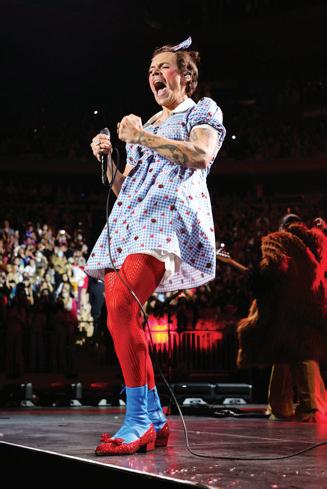
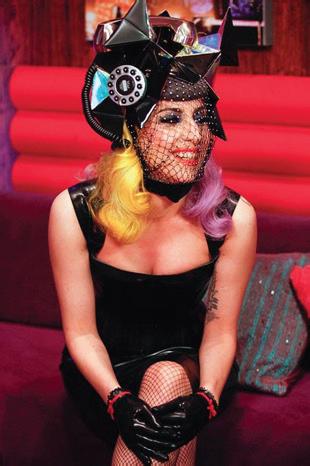 Figure 9: David
Figure 8: “New Lady Gaga Weird Outfits That Got Us Hooked”, Telephone Hat, Lady Gaga, 2014
Figure 7: Harry Styles, Getty / Theo Wargo
Figure 9: David
Figure 8: “New Lady Gaga Weird Outfits That Got Us Hooked”, Telephone Hat, Lady Gaga, 2014
Figure 7: Harry Styles, Getty / Theo Wargo
Camp in Artists’ Brands
As we all know, artists perform for their fans. They play the role of someone to keep their fans entertained. Most of these roles are seen as daring and unnatural. Artists such as harry styles, David Bowie, And Lady Gaga all play specific roles that are characterized as camp to expand their brand. Most of the time it is only about their clothes and their specific “look” which keeps their name in the news. David Bowie’s outfits showed that “this open embrace of ‘in-betweenness’ and ‘neither one nor the other’ combined with the glitz and glamour of his characters that aligns Bowie with camp sensibilities” (Emily Barker, 2021). He was able to question the norm and push the boundaries of what is acceptable and what is not. This showed the world that his challenging the social norm gave a name to his brand all because of his outrageous style. His goal was to introduce camp and focus it on the human body and identity. “Camp is successful in the mainstream, and provides inspiration and validation for others to be their authentic selves” (Emily Barker, 2021). He became an inspiration to everyone, teaching others to embrace their true selves and put on a show. This leads many other singers such as Harry Styles to create their brand around the flamboyancy and exaggeration of camp. They were inspired by the breaking of social norms which influenced their brand.
 David Bowie, Best dressed, Rolling Stones
Barker, Emily, “FROM MARGINAL TO MAINSTREAM: THE QUEER HISTORY OF CAMP AESTHETICS & ETHICAL ANALYSIS OF CAMP IN HIGH FASHION” (2021). Honors Projects. 118.
David Bowie, Best dressed, Rolling Stones
Barker, Emily, “FROM MARGINAL TO MAINSTREAM: THE QUEER HISTORY OF CAMP AESTHETICS & ETHICAL ANALYSIS OF CAMP IN HIGH FASHION” (2021). Honors Projects. 118.


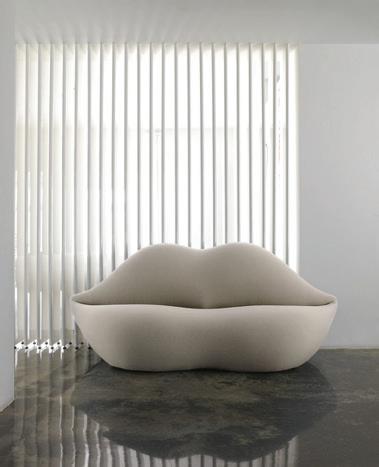
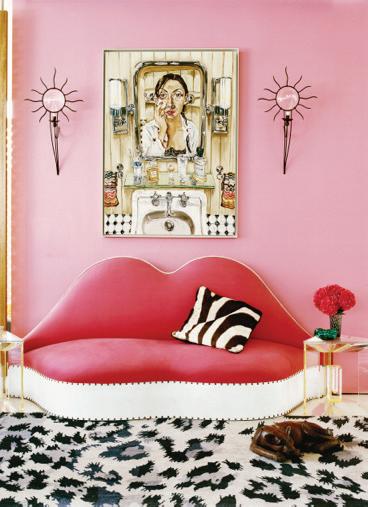
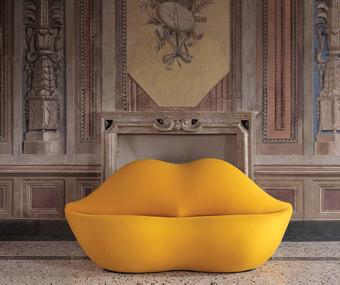
 Figure 12: Bocca Dark Lady sofa by Studio 65 for Gufram, 2008.
Photo: Courtesy of Gufram
Figure 11: Bocca Dark Lady sofa by Studio 65 for Gufram, 2008.
Photo: Courtesy of Gufram
Figure 13: A vintage version holds court in fashion designer Diane von Furstenberg’s Manhattan home. Francois Halard
Figure 14: A saffron yellow Bocca Sofa. The color is just one of 25 new tones that the company is releasing.Photo: Mads Mogensen
Figure 15: Gufram Bocca Sofa by Studio 65, 1970
Figure 10: Gufram Bocca Sofa by Studio 65, 1970
Figure 12: Bocca Dark Lady sofa by Studio 65 for Gufram, 2008.
Photo: Courtesy of Gufram
Figure 11: Bocca Dark Lady sofa by Studio 65 for Gufram, 2008.
Photo: Courtesy of Gufram
Figure 13: A vintage version holds court in fashion designer Diane von Furstenberg’s Manhattan home. Francois Halard
Figure 14: A saffron yellow Bocca Sofa. The color is just one of 25 new tones that the company is releasing.Photo: Mads Mogensen
Figure 15: Gufram Bocca Sofa by Studio 65, 1970
Figure 10: Gufram Bocca Sofa by Studio 65, 1970
Camp In Furniture
Camp in Furniture
Camp is not only present in fashion but also present in other forms of art such as interior design and furniture. Dalí’s Iconic Lips Sofas sparked a surrealist sensation all due to movie star Mae West’s famous pout. This image shows the work completed by Spanish artist Salvador Dalí who was so amused by Mae West, that he decided to create her face out of pieces of furniture. Dali’s creation leads to many other artists to borrow his ideas of this form of expression. Due to the eff eminate and theatrical aesthetic, his work was classifi ed as a form of “camp.” Andrew Bolton, a British museum curator, mentioned how we are in the middle of the golden age of camp: “Whether it’s pop camp, queer camp, high camp, or political camp— Trump is a very camp fi gure—I think it’s very timely” (Christopher Mason, 2019). Dali was able to create and explore a post-digital expression that shifted the design world, creating a unique strategy that was used by many other artists. The post-digital allowed for this creation’s focus to be on the human rather than a digital aspect. This lead to a specifi c perspective on the designers’ reality, showing how one person can infl uence the creativity of many others. Though the lips seem like a unique design for a sofa, the initial review mentioned how this idea was a provocative take on modern furniture. This led to the introduction of “camp” style into the art of furniture and design. Because of this introduction of a new style, design began to push the boundaries of what is normal and strive for something more aggressive and possibly off ensive. This shift inspired not only the designers but also the clients into producing something that felt abnormal.
Figure 7: A lips sofa at Château de la Colle Noire Mason, Christopher. “Camp Is Not Just Fashion—Itʼs Design, Too.” Architectural Digest, 6 May 2019, www.architecturaldigest.com/story/camp-design-decorative-arts. CourtesyCamp is everywhere. Anything under the sun can now be classifi ed as camp in some way or another. Since camp can be used in any form, it started making its presence in political art. Figure 19 is a Scott Donaldson. The camp aesthetic is very prominent in this p because of the bright colors and the whimsy feeling to it. Thi up teaching people that “camp eye has the power to transform ex rience” (Susan Sontag, 1964). This introduced many diff erent iterations of political art which expressed bright colors or abstrac ing. Scott Donaldson’s piece also was meant to be controversia he decided to put the First President, George Washington, in He wanted to address in this piece the “terms of gay camp aesth to wonder how the idea of the avant-garde has neglected… the vi importance of dissident sexualities in the historical project taining the ‘avant-garde’” (Fabio Cleto, 1999). This piece in post-digital perception since the mural was again focusing on t man rather than the digital world. For the post-digital, there tionship between social and physical communication, or high tec high touch which created a reality that focuses on the human si the digital side. They believe that humans are beyond the digi post-digital world, his art can express his perception of reali he believed expression was used to not only incorporate “camp” his pieces but also explain his desire to apprehend his conven experience of life. Most camp art is inspired by gay sexualitie tain communities that seemed to be “absurd” at the time such a drag community. It is almost as if camp art is trying to expre ference between the two worlds of post-digital and digital but beautiful the diff erence is.
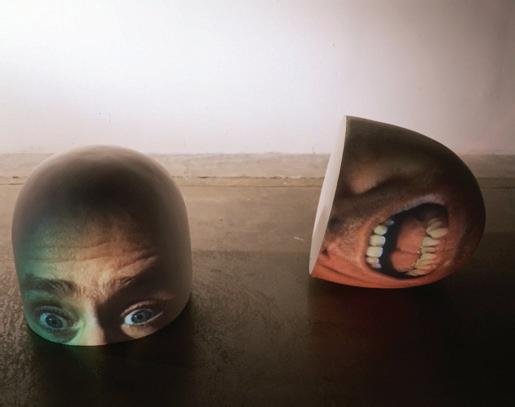
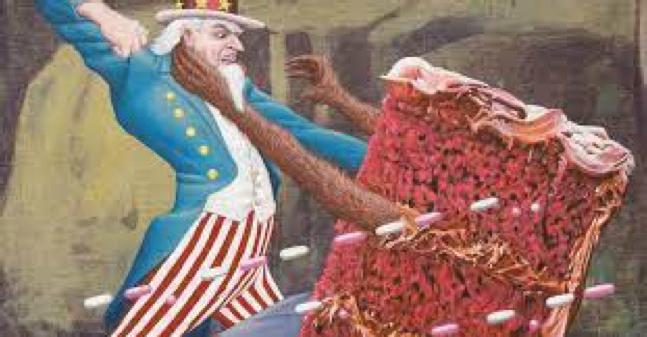
 Figure 16: Grayson Perry Britain is Best, 2016 Castlegate House Gallery
Figure 17: Jim Shaw Good N Plenty, 2018 Simon Lee Gallery
Figure 18: JTony Oursler Half (Brain), 1998 Metro Pictures
Sontag, Susan. (1964) 2018. Notes Cleto, Fabio (1999). Camp: Queer Aesthetics 7486-1171-3).
Figure 16: Grayson Perry Britain is Best, 2016 Castlegate House Gallery
Figure 17: Jim Shaw Good N Plenty, 2018 Simon Lee Gallery
Figure 18: JTony Oursler Half (Brain), 1998 Metro Pictures
Sontag, Susan. (1964) 2018. Notes Cleto, Fabio (1999). Camp: Queer Aesthetics 7486-1171-3).
Camp in Political art
Camp is everywhere. Anything under the sun can now be classifi ed as camp in some way or another. Since camp can be used in any form, it started making its presence in political art. Figure 19 is a mural by Scott Donaldson. The camp aesthetic is very prominent in this piece because of the bright colors and the whimsy feeling to it. This ended up teaching people that “camp eye has the power to transform experience” (Susan Sontag, 1964). This introduced many diff erent iterations of political art which expressed bright colors or abstract meaning. Scott Donaldson’s piece also was meant to be controversial since he decided to put the First President, George Washington, in drag. He wanted to address in this piece the “terms of gay camp aesthetic to wonder how the idea of the avant-garde has neglected… the vital importance of dissident sexualities in the historical project of ascertaining the ‘avant-garde’” (Fabio Cleto, 1999). This piece introduced a post-digital perception since the mural was again focusing on the human rather than the digital world. For the post-digital, there is a relationship between social and physical communication, or high tech and high touch which created a reality that focuses on the human side vs the digital side. They believe that humans are beyond the digital. In a post-digital world, his art can express his perception of reality and how he believed expression was used to not only incorporate “camp” into his pieces but also explain his desire to apprehend his conventional experience of life. Most camp art is inspired by gay sexualities and certain communities that seemed to be “absurd” at the time such as the drag community. It is almost as if camp art is trying to express the difference between the two worlds of post-digital and digital but also how beautiful the diff erence is.
on “Camp.” London, Uk: Penguin Books. Aesthetics and the Performing Subject: A Reader (0-74861171-1, 978-0-
 Figure 19: Scott Donaldson - Campy Washington Mural, 2008, Cincinnati. Image via flickriver.com
Figure 19: Scott Donaldson - Campy Washington Mural, 2008, Cincinnati. Image via flickriver.com
Camp in The 2019 Met Gala is unique and prominent to this exhibition due to the heavy emphasis on abnormal looks. This specifi c image is the perfect representation of how camp is integrated into fashion to show one’s expression and how they use this to introduce post-digital. Camp was the theme of the ye exaggerated outfi ts. The looks that were shown on the red carpet off ered “an aesthetic style and sensibility that afi cionados regard as appealing because of its ironic, overthe-top challenging of the norms of ‘good behavior’ and ‘good taste’” (Tiina Rosenberg, 2020). It has been said that celebrit and exclusivity. The perception of reality for these celebrities is completely diff erent compared to the reality of a normal person. Their reality relies on how they are styled and how their fashion choices represent their “brand,” but is that really how their reality is behind closed doors? Their world i ion expression for celebrities is described “as a more fragmented, competitive, simultaneous, and potentially confusing cultu likened, rather apocalyptically, to the spreading of a virus” (Christopher Breward, 2003). It is almost as if their reality and their lifestyle are a virus. It is an ostentatious society where everyone shows off their brand. Their reality is one-sided and selfi sh, doing things that would promote their brand and make their net worth grow. Their aesthetic expression revolves around how they want to portray themselves, communicating an appearance of self-interest. For the met gala is presented in a post-digital way because of the non-digital aspects that are used in fashion and styling.
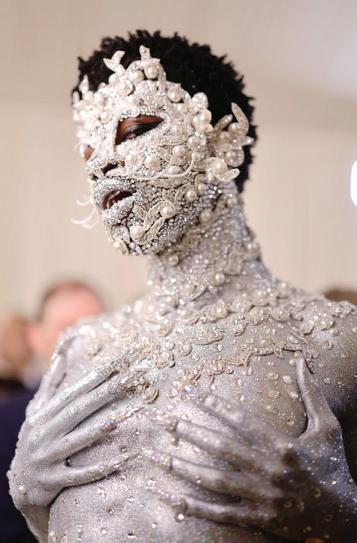

Rosenberg, Tiina. 2020. “Rising Like the Eurovision Song Contest: On Kitsch, Camp, and Queer Culture.” Lambda Nordica 25 (2): 93-113. Breward, Christopher. 2003. Fashion. Oxford ; New York: Oxford University Press.
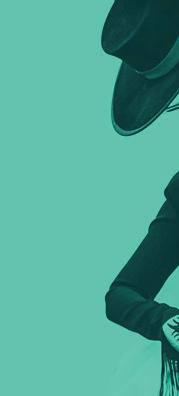 Figure 22: “A Hat as a Hat”, Janelle
Figure 20: Jared Leto in Gucci, By Dimitrios Kambouris/ Getty Images, 2019
Figure 21: Lil Nas X, Matt Winkelmeyer, Getty Images for The Met Museum, 2023
Figure 22: “A Hat as a Hat”, Janelle
Figure 20: Jared Leto in Gucci, By Dimitrios Kambouris/ Getty Images, 2019
Figure 21: Lil Nas X, Matt Winkelmeyer, Getty Images for The Met Museum, 2023
in Fame e to the heavy emphasis on abnormal looks. This specifi c image is the perfect representation of how camp is se this to introduce post-digital. Camp was the theme of the year, inviting the interpretation of abnormal and exaggerated outfi ts. The looks that were shown on the red carpet off ered “an aesthetic style and sensibility that afi cionados regard as appealing because of its ironic, overaste’” (Tiina Rosenberg, 2020). It has been said that celebrities and their events represent a society of luxury s is completely diff erent compared to the reality of a normal person. Their reality relies on how they are styled and really how their reality is behind closed doors? Their world is also heavily infl uenced by fashion and events. Fashed, competitive, simultaneous, and potentially confusing cultural phenomenon that some commentators have likened, rather apocalyptically, to the spreading of a virus” (Christopher Breward, 2003). It is almost as if their reality and their lifestyle are a virus. It is an ostentatious society where everyone shows off their brand. Their reality is one-sided and selfi sh, doing things that would promote their brand and make their net worth grow. Their aesthetic exommunicating an appearance of self-interest. For the met gala, since it deals with fashion, their expression spects that are used in fashion and styling.
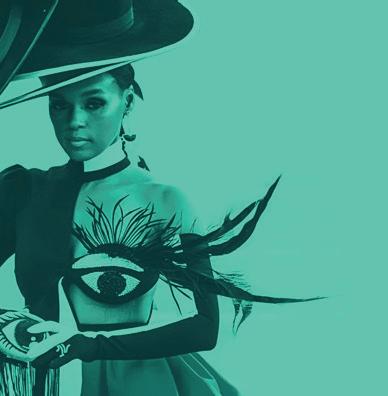
93-113.
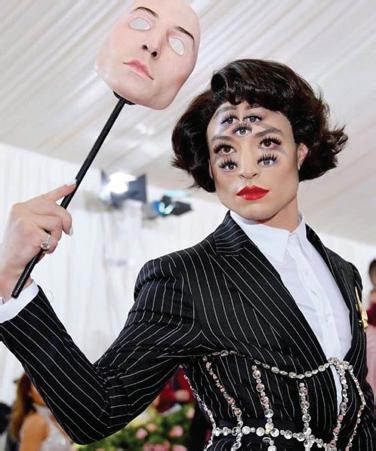 Janelle Monáe in Christian Siriano, By Theo Wargo/ Getty Images, 2019 Figure 23: Ezra Miller in Burberry, By Dimitrios Kambouris/ Getty Images, 2019
Janelle Monáe in Christian Siriano, By Theo Wargo/ Getty Images, 2019 Figure 23: Ezra Miller in Burberry, By Dimitrios Kambouris/ Getty Images, 2019
There are many diff erent ways that camp can be described and portrayed. When it comes to interior design, there is a lev el of elegance while also introducing the wacky characteristic that come with it. Camp has not been involved with interior design for long but it has shown up in the decorative arts and architectural styles such as Art Nouveau to Italian Radical Design. Benny Castle, a world designer, sees camp as being self-expression. He mentioned how “Interiors can be both intentiona and unintentionally camp. Going into a project to become camp is sort of missing the point - it either becomes camp or not.” The element of camp is introduced into a post-digital world, a lowing the human to be the creator of interior design. When it comes to camp in interior design, one needs to be sure not to overdo the design since it could be read as tacky. Camp could also be seen as minimalistic which daring colors and patterns. As seen in the image, “The minimalism of The Memphis Group,” there is a daring design that is concealed with hard edges and a minimalistic feel. There is an impression that “The hallmark camp is the spirit of extravagance. Camp is a woman walking around in a dress made of three million feathers” (Susan Sontag, 1964). Camp allows for creativity to shine in a post-digi world because of the human aspect of this particular aesthetic Humans are capable of making the design personal and appealing to other humans which inspires others to move beyond the norm and continue to create absurd designs.

 Figure 24: Sofa-ring designed by Masanouri Umeda, member of The Memphis Group. Photo: memphis-milano.com
Figure 25: Image courtesy of Versace
Sontag, Susan. (1964)
Figure 24: Sofa-ring designed by Masanouri Umeda, member of The Memphis Group. Photo: memphis-milano.com
Figure 25: Image courtesy of Versace
Sontag, Susan. (1964)
Camp in Interior Design
There are many diff erent ways that camp can be described and portrayed. When it comes to interior design, there is a level of elegance while also introducing the wacky characteristics that come with it. Camp has not been involved with interior design for long but it has shown up in the decorative arts and architectural styles such as Art Nouveau to Italian Radical Design. Benny Castle, a world designer, sees camp as being self-expression. He mentioned how “Interiors can be both intentionally and unintentionally camp. Going into a project to become camp is sort of missing the point - it either becomes camp or not.”
The element of camp is introduced into a post-digital world, allowing the human to be the creator of interior design. When it comes to camp in interior design, one needs to be sure not to overdo the design since it could be read as tacky. Camp could also be seen as minimalistic which daring colors and patterns. As seen in the image, “The minimalism of The Memphis Group,” there is a daring design that is concealed with hard edges and a minimalistic feel. There is an impression that “The hallmark of camp is the spirit of extravagance. Camp is a woman walking around in a dress made of three million feathers” (Susan Sontag, 1964). Camp allows for creativity to shine in a post-digital world because of the human aspect of this particular aesthetic. Humans are capable of making the design personal and appealing to other humans which inspires others to move beyond the norm and continue to create absurd designs.
(1964) 2018. Notes on “Camp.” London, Uk: Penguin Books.
 Figure 26: Stacey, Sarah. “Why I Fell in Love With Camp Style - Sarah Stacey Interior Design.” Sarah Stacey Interior Design, 18 Jan. 2021.
Figure 26: Stacey, Sarah. “Why I Fell in Love With Camp Style - Sarah Stacey Interior Design.” Sarah Stacey Interior Design, 18 Jan. 2021.
Camp in Fashion Design

A showy, exaggerated, and frequently satirical approach to clothing and accessories is referred to as “camp idea of “camp,” which is a feeling of aesthetic appreciation for dramatic and exaggerated aspects, frequently fashion is renowned for its audacity, extravagance, and disregard for established standards of dress. It ated or oversized silhouettes, unusual fabrics, and funny accessories. Some examples are Bold and vibrant prints, Quirky Accessories, Pop Culture References, and Irony and Humor. Bright, striking colors are frequently evoke a sense of drama. Intentionally outlandish color combinations, metallics, and bright hues can all be that defy conventional fashion rules are embraced by camp fashion. These can feature exaggerated or on traditional silhouettes. Imaginative, irreverent, and occasionally clashing patterns and prints are frequently usual print combinations, including animal prints combined with florals or polka dots, as well as eye-catching a sense of comedy and playfulness into the overall outfit are embraced by camp fashion. Rei Kawakubo, styles such as punk have lost their original rebel spirit today. I think camp can express something deeper, ated accessories, unusual headpieces, striking jewelry, and other quirky components that lend an air of incorporated camp rebels against conventional fashion standards and exaggerates and plays up the delight ion being a physical component and focusing on the human body, it is classified as a post-digital matter. ion industry, the clothing pieces can speak for themselves and create an expression that would not be presented brings a feeling of playfulness and whimsy to the world of fashion, whether it is on the catwalk, in street
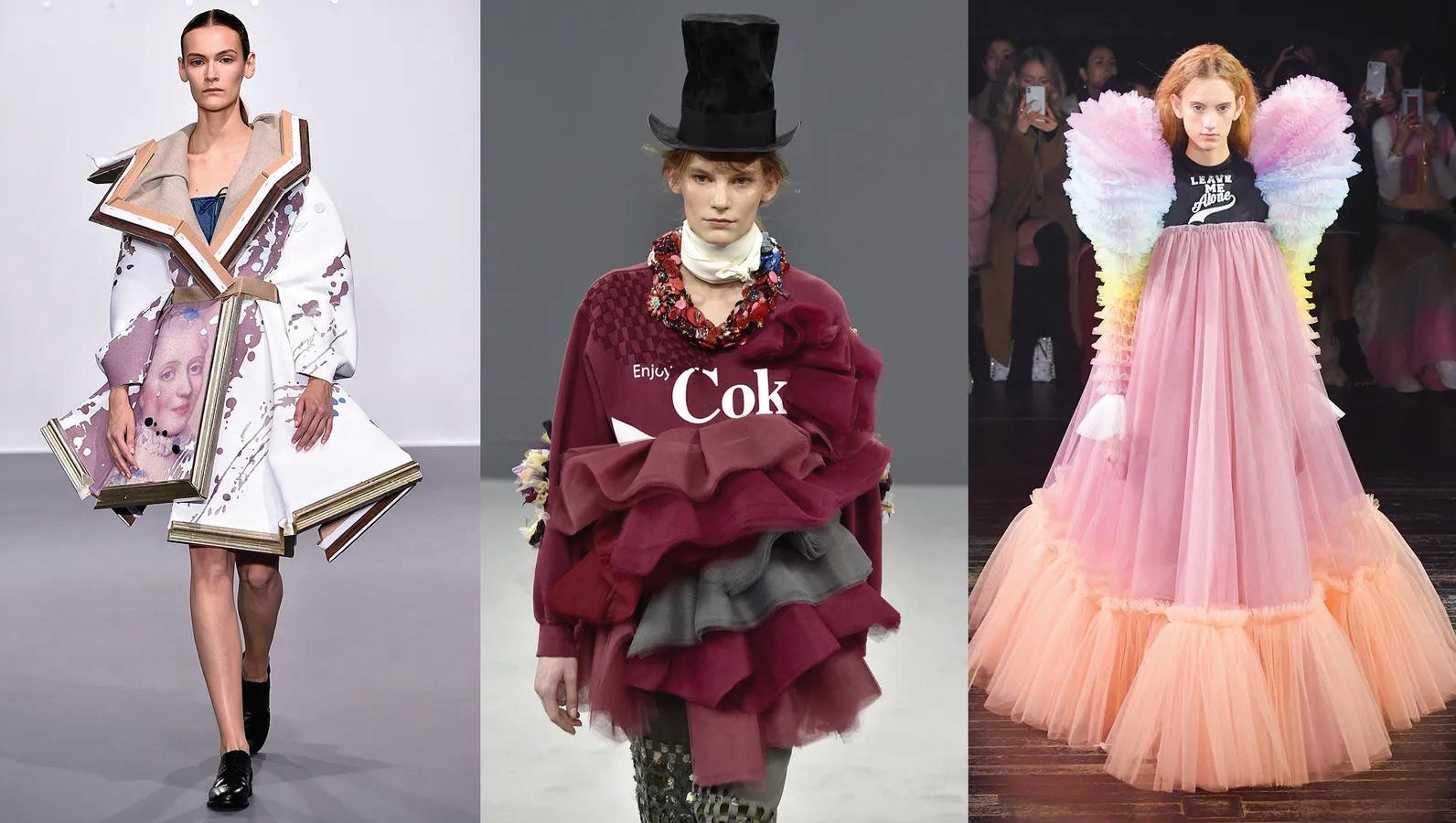 Figure 27: Victor VIRGILE/Gamma-Rapho via Getty Images; Kristy Sparow/Getty Images; Victor Boyko/Getty Images
Figure 28: Cher poses for a Fashion Session nia, Harry Langdon/Getty Images
Figure 27: Victor VIRGILE/Gamma-Rapho via Getty Images; Kristy Sparow/Getty Images; Victor Boyko/Getty Images
Figure 28: Cher poses for a Fashion Session nia, Harry Langdon/Getty Images
“camp style” in the fashion industry. It embraces the frequently with a sense of comedy or playfulness. Camp frequently uses vivid hues, strong patterns, exaggervibrant colors, Dramatic Silhouettes, Playful Patterns and frequently used in camp fashion to draw attention and be examples of this. Exaggerated and dramatic forms enormous proportions, unusual shapes, and fun takes frequently seen in camp fashion. Camp can also feature uneye-catching logos and themes. Unique accessories that inject Kawakubo, a Japanese fashion designer, said “So many so-called deeper, and give birth to progress.” Oversized or exaggereccentricity can all fit into this category. Fashion that delight of self-expression and inventiveness. Due to fashmatter. With the digital world being separate from the fashpresented if it was classified as digital. Camp fashion street style, or everyday attire.

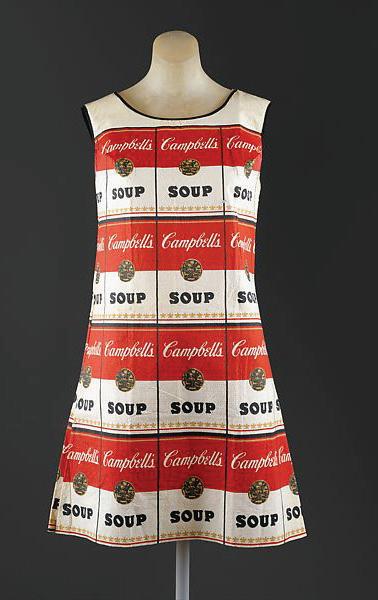 Figure 29: “The Souper Dress,” Andy Warhol, 1966-67
Session in a Bob Mackie Creation on April 9, 1978 in Los Angeles, Califor-
Figure 29: “The Souper Dress,” Andy Warhol, 1966-67
Session in a Bob Mackie Creation on April 9, 1978 in Los Angeles, Califor-
One of “camp’s” many defi nitions is the exaggeration of makeup and hairstyles, fl amboyant clothing, and exaggerated gestures. Now many people wonder where the defi nition of this word came from. Before “camp” became a word, was an acronym for the word K.A.M.P. which stood for “Known as Male Prostitute.” This is where the initial idea of drag or the idea of men adopting the art of exaggerated costumes and makeup while also is expressed as a form of lifestyle that allows men to change t new persona. To many people during this time, it was seen as “unnatural” to the world for a man to do this. Before camp was introduced to the world as body-positivity, camp was “theorized as the shameful sign of an unreconstructed, self-hating, and even woman-hating, homosexual” (Fabio Cleto, 1999). But wh ment on another’s lifestyle? Now things are so diff erent that the “rehabilitation of sexual diff erence” is seen as to camp. This change in our society created a change in the perception of rea others. Camp insists on “going against the grain of one’s sex. relist for the exaggeration of sexual characteristics and pe how camp has given men the chance to express themselves in a wa perception of reality because they are no longer classifi ed as a man when in costume. They can create a new persona in a post-digital world. There is a new interest in the human body i step in humanity while the digital world waits for the next c term K.A.M.P. but also created an outlet for these men to be who they want to be without feeling afraid to present themselves in such an uncommon way.
 Sontag, Susan. (1964) 2018. Notes on Cleto, Fabio (1999). Camp: Queer Aesthetics
Figure 30: The musical “The Rocky Horror Picture Show” (1975) is an iconic example of camp aesthetics.
Sontag, Susan. (1964) 2018. Notes on Cleto, Fabio (1999). Camp: Queer Aesthetics
Figure 30: The musical “The Rocky Horror Picture Show” (1975) is an iconic example of camp aesthetics.
Camp in K.A.M.P. definitions is the exaggeration of makeup and hairstyles, flamboyant clothing, and exaggerated gespeople wonder where the definition of this word came from. Before “camp” became a word, was an acronym which stood for “Known as Male Prostitute.” This is where the initial idea of drag or the idea of men exaggerated costumes and makeup while also portraying a female or flamboyant persona. This acronym of lifestyle that allows men to change their perspective of reality and become a different person and people during this time, it was seen as “unnatural” to the world for a man to do this. Before camp world as body-positivity, camp was “theorized as the shameful sign of an unreconstructed, self-hating, woman-hating, homosexual” (Fabio Cleto, 1999). But why did people think they had to right and audacity to comlifestyle? Now things are so different that the “rehabilitation of sexual difference” is seen as to camp. This created a change in the perception of reality and how we not only view ourselves but also how we view “going against the grain of one’s sex. What is most beautiful in virile men is something feminine… a exaggeration of sexual characteristics and personality mannerisms” (Susan Sontag, 1964). It is truly exceptional men the chance to express themselves in a way that they have never been able to before. It alters their because they are no longer classified as a man when in costume. They can create a new persona in a There is a new interest in the human body in a way that has not been accepted yet. It allows for the next the digital world waits for the next command from the human. “Camp” was not only inspired by the created an outlet for these men to be who they want to be without feeling afraid to present themselves way. on “Camp.” London, Uk: Penguin Books. Aesthetics and the Performing Subject: A Reader (0-74861171-1, 978-0-7486-1171-3).
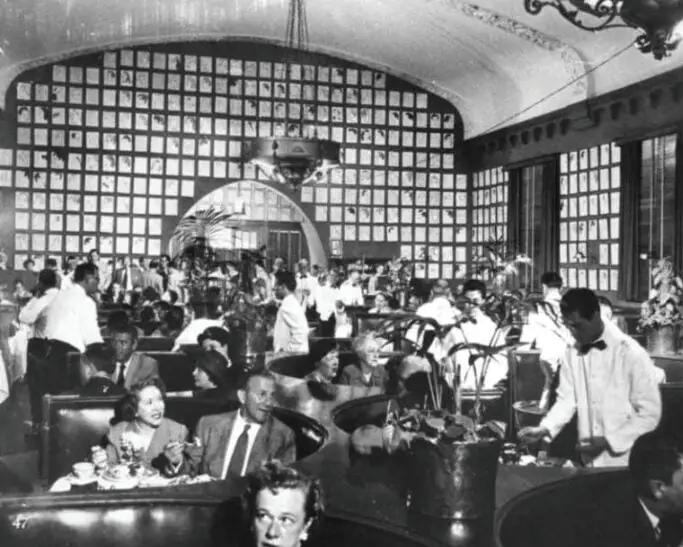 Figure 31: George Burns and Gracie Allen at the Hollywood Brown Derby (1628 N. Vine St.).
Figure 31: George Burns and Gracie Allen at the Hollywood Brown Derby (1628 N. Vine St.).
Camp in Restaurants
Camp ranges from art to the restaurant business, paving a path for acceptance and approval. The Brown Derby was a particular restaurant that encompassed the roles of camp. This place was a very famous spot that was popular due to its celebrity attraction. “The question isn’t, ‘Why travesty, impersonation, theatricality?’ the question is, rather, ‘When does travesty, impersonation, theatricality acquire the special flavor of camp?’” (Susan Sontag, 1964). This restaurant focused on the special flavor of camp and created a space for people which invited them into the special world of camp. With the historical landmark, the Brown Derby was known for the human experience within a post-digital world. It invited people to dine and enjoy the experience. Camp showed people the exaggerated. The main focal point of this restaurant was the domed-shaped “hat” that was seen as unnatural compared to the other restaurants on Sunset Boulevard or in LA as a whole. This design inspired people to create more ostentatious architecture, pushing the boundaries of what is considered normal.
Sontag, Susan. (1964) 2018. Notes on “Camp.” London, Uk: Penguin Books.Camp in Comics
From the bright colors to the ostentatious depiction of people, the old Flash Gordon comic books were a staple comic book that perfectly describes Camp. Flash Gordon was created by Alex Raymond and Don Moore. This comic series follows the adventures of Flash Gordon who is a space adventurer. He battles many villains and saves the universe from numerous dangers. Camp was introduced due to the extravagant colors and illustrations. “Camp is the consistently aesthetic experience of the world. It incarnates a victory of ‘style’ over ‘content,’ ‘aesthetics’ over ‘morality,’ of irony over tragedy” (Susan Sontag, 1964). That is exactly what this comic series portrays. Camp is used to dethrone the seriousness and introduce a more playful and anti-serious. With the interpretation of camp within this series, Flash Gordon became a very popular series that influenced many artists to use bold text and daring colors to introduce a new style. In a post-digital world, comics were a main source of entertainment, allowing the human brain to work beyond the digital world. With the lack of digital, the brain can create masterpieces that can lead to the expansion of thought or style. Susan Sontag explains that “Camp proposes a comic vision to the world” (Susan Sontag, 1964). With help from camp, the development of creativity and personality can expand in numerous ways and introduce a new perspective of reality for people.
Sontag, Susan. (1964) 2018. Notes on “Camp.” London, Uk: Penguin Books.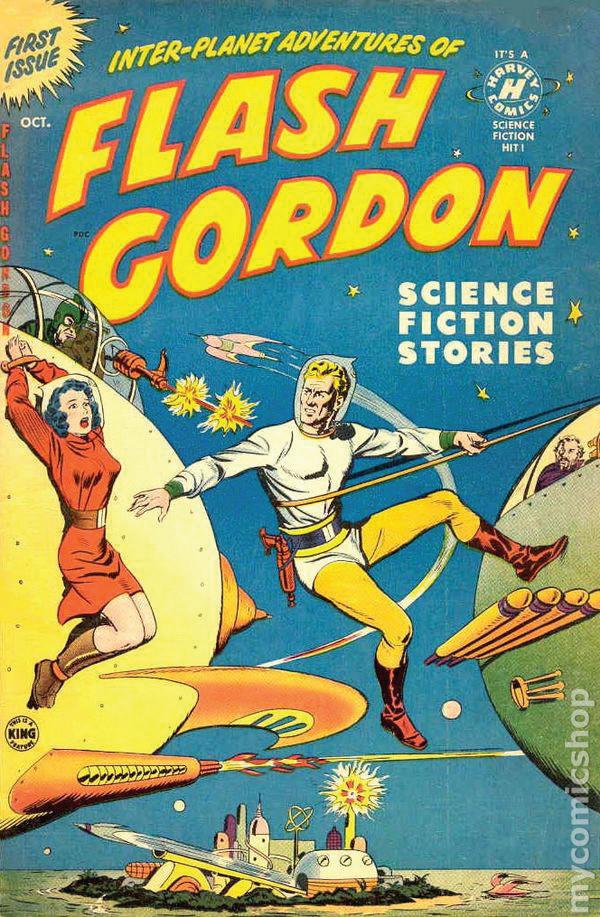
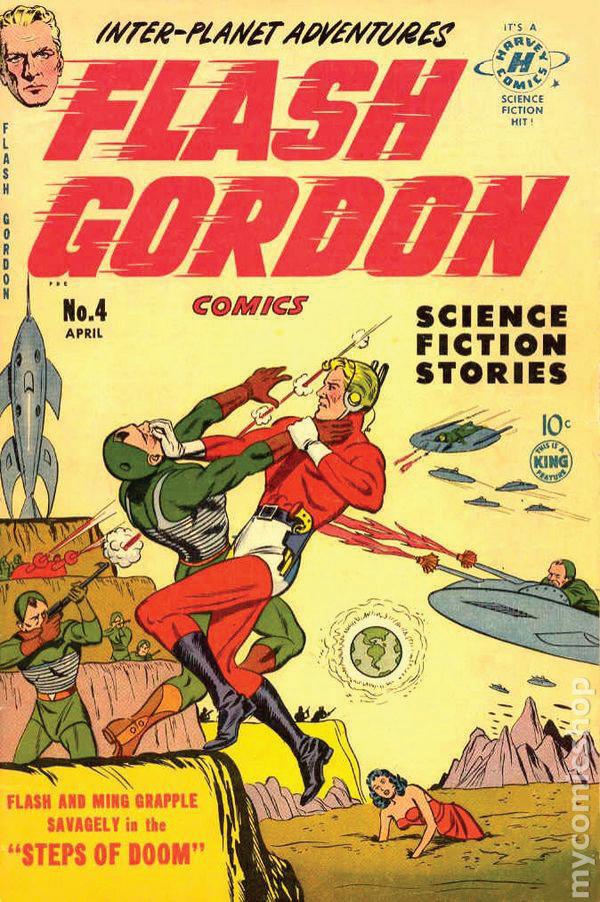 Figure 32: Mycomicshop. Flash Gordon (1950 Harvey) Comic Books.
Figure 33: Mycomicshop. Flash Gordon (1950 Harvey) Comic Books.
Figure 32: Mycomicshop. Flash Gordon (1950 Harvey) Comic Books.
Figure 33: Mycomicshop. Flash Gordon (1950 Harvey) Comic Books.
Camp in Turn-of-the-centry
The picture postcard become became a way for wealthy patrons to send pictures to friends or relatives. the 19th century, this new form of communication introduced a new perception of reality due to the spreading love and connections across the world. Since some of these postcards are expressed in a tell a story or introduce a new topic. It is believed that Camp “taste is, above all, a mode of enjoyment, at someone who succeeds in being serious dramatic” (Susan Sontag, 1964). These postcards introduced serious. Many of these turn-of-the-century postcards also were a way for these artists to make predictions, of expression in the early 19th century. Camp taught people how to dream and be creative with the illustrations ed, expression was used to illustrate what France would look like in the year 2000 in a post-digital world.

 Figure 35: Hill, David J. “These Amazing 19th Century Figure 34: “The New-Fangled Barber”.
Sontag, Susan. (1964) 2018. Notes on “Camp.” London, Uk: Penguin Books.
Figure 35: Hill, David J. “These Amazing 19th Century Figure 34: “The New-Fangled Barber”.
Sontag, Susan. (1964) 2018. Notes on “Camp.” London, Uk: Penguin Books.
Turn-of-the-centry postcards

relatives. These postcards, having intricate designs and illustrations, were often considered camp. During changing “technologies” of the world. People were now able to communicate in a post-digital world, Campy way, people were introduced to a new where they could use the card’s expression as a way to enjoyment, of appreciation… Camp taste doesn’t propose that it is in a bad state to be serious; it doesn’t sneer introduced a new form of expression that was meant to be enjoyable by all and not meant to come off as too predictions, many of them coming true. The perception of reality shifted due to the use of camp as a form illustrations of these postcards. With the many future predictions that these specific postcards depictworld.

Bibliography:
Sontag, Susan. (1964) 2018. Notes on “Camp.” London, Uk: Penguin Books.
Risatti Howard and Kenneth R Trapp. 2007. A Theory of Craft: Function and Aesthetic Expression. Chapel Hill: University of North Caro lina Press.
Viljoen, Stella. “GQ Style: Coloniality and Camp in Fashion for Men.” Safundi, Taylor and Francis, Nov. 2022, pp. 1–23.
Rosenberg, Tiina. 2020. “Rising Like the Eurovision Song Contest: On Kitsch, Camp, and Queer Culture.” Lambda Nordica 25 (2): 93113.
Breward, Christopher. 2003. Fashion. Oxford ; New York: Oxford University Press.
Mason, Christopher. “Camp Is Not Just Fashion—It’s Design, Too.” Architectural Digest, 6 May 2019, www.architecturaldigest.com/story/ camp-design-decorative-arts.
Cleto, Fabio (1999). Camp: Queer Aesthetics and the Performing Subject: A Reader (0-74861171-1, 978-0-7486-1171-3).
Barker, Emily, “FROM MARGINAL TO MAINSTREAM: THE QUEER HISTORY OF CAMP AESTHETICS & ETHICAL ANALYSIS OF CAMP IN HIGH FASHION” (2021). Honors Projects. 118.
Images:
Figure 1: Openshaw, Jonathan. Postdigital Artisans: Craftsmanship With a New Aesthetic in Fashion, Art, Design and Architecture. 2015
Figure 2: Openshaw, Jonathan. Postdigital Artisans: Craftsmanship With a New Aesthetic in Fashion, Art, Design and Architecture. 2015
Figure 3: Openshaw, Jonathan. Postdigital Artisans: Craftsmanship With a New Aesthetic in Fashion, Art, Design and Architecture. 2015
Figure 4: Courtesy of the Metropotan Museum of Art, Photo © Johnny Dufort, 2018
Figure 5: Courtesy of the Metropotan Museum of Art, Photo © Johnny Dufort, 2018
Figure 6: Courtesy of the Metropotan Museum of Art, Photo © JohnnyDufort, 2018
Figure 7: Harry Styles, Getty / Theo Wargo
Figure 8: “New Lady Gaga Weird Outfits That Got Us Hooked”, Telephone Hat, Lady Gaga, 2014
Figure 10: Gufram Bocca Sofa by Studio 65, 1970
Figure 11: Bocca Dark Lady sofa by Studio 65 for Gufram, 2008. Photo: Courtesy of Gufram
Figure 12: Bocca Dark Lady sofa by Studio 65 for Gufram, 2008. Photo: Courtesy of Gufram
Figure 13: A vintage version holds court in fashion designer Diane von Furstenberg’s Manhattan home. Francois Halard
Figure 14: A saffron yellow Bocca Sofa. The color is just one of 25 new tones that the company is releasing.Photo: Mads Mogensen
Figure 15: Gufram Bocca Sofa by Studio 65, 1970
Figure 16: Grayson Perry, Britain is Best, 2016, Castlegate House Gallery
Figure 17: Jim Shaw, Good N Plenty, 2018, Simon Lee Gallery
Figure 18: JTony Oursler, Half (Brain), 1998, Metro Pictures
Figure 19: Scott Donaldson - Campy Washington Mural, 2008, Cincinnati. Image via flickriver.com
Figure 20: Jared Leto in Gucci, By Dimitrios Kambouris/ Getty Images, 2019
Figure 21: Lil Nas X, Matt Winkelmeyer, Getty Images for The Met Museum, 2023
Figure 22: “A Hat as a Hat”, Janelle Monáe in Christian Siriano, By Theo Wargo/ Getty Images, 2019
Figure 23: Ezra Miller in Burberry, By Dimitrios Kambouris/ Getty Images, 2019
Figure 24: Sofa-ring designed by Masanouri Umeda, member of The Memphis Group. Photo: memphis-milano.com
Figure 25: Image courtesy of Versace
Figure 27: Victor VIRGILE/Gamma-Rapho via Getty Images; Kristy Sparow/Getty Images; Victor Boyko/Getty Images
Figure 28: Cher poses for a Fashion Session in a Bob Mackie Creation on April 9, 1978 in Los Angeles, California, Harry Langdon/Getty Images
Figure 29: “The Souper Dress,” Andy Warhol, 1966-67
Figure 30: The musical “The Rocky Horror Picture Show” (1975) is an iconic example of camp aesthetics.
Figure 31: George Burns and Gracie Allen at the Hollywood Brown Derby (1628 N. Vine St.).
Figure 32: Mycomicshop. Flash Gordon (1950 Harvey) Comic Books.
Figure 33: Mycomicshop. Flash Gordon (1950 Harvey) Comic Books.
Figure 34: “The New-Fangled Barber”.
Figure 35: Hill, David J. “These Amazing 19th Century French Postcards Predicted Our World—See How They Did.” Singularity Hub, 19 Mar. 2018.
Figure 36: A classic Los Angeles postcard from 1948. Image courtesy of PopeyesPostcards.
: Openshaw, Jonathan. Postdigital Artisans: Craftsmanship With a New Aesthetic in Fashion, Art, Design and Architecture. 2015
: Openshaw, Jonathan. Postdigital Artisans: Craftsmanship With a New Aesthetic in Fashion, Art, Design and Architecture. 2015
